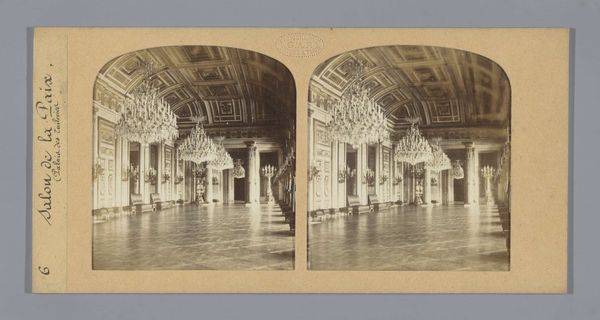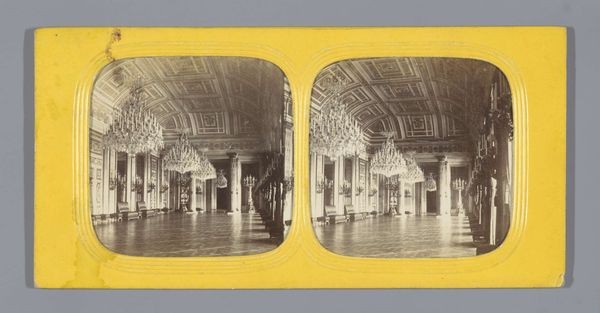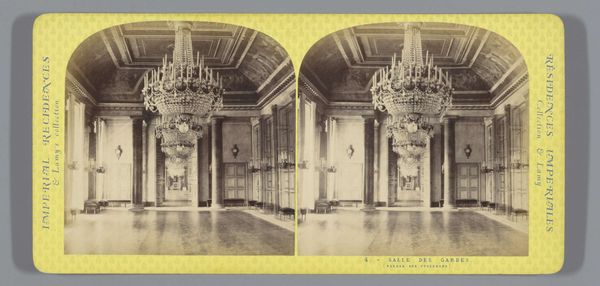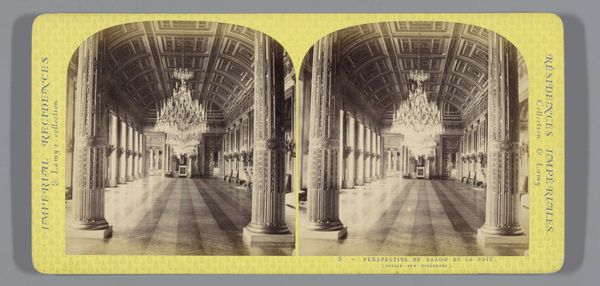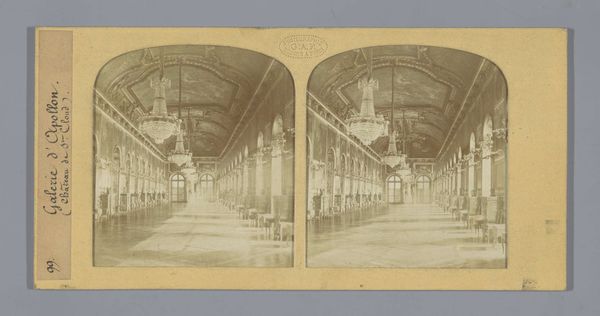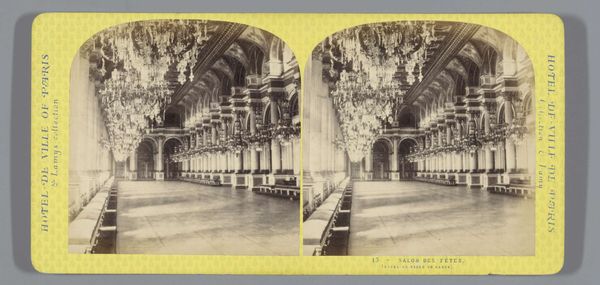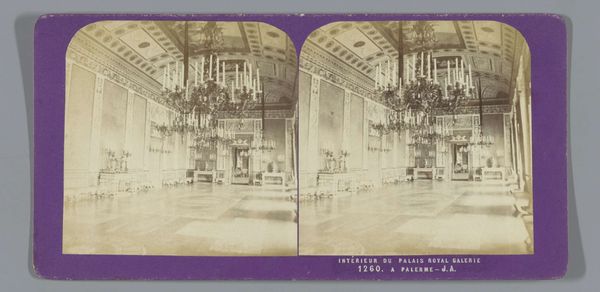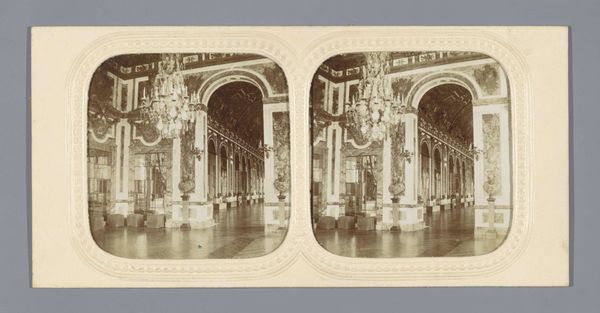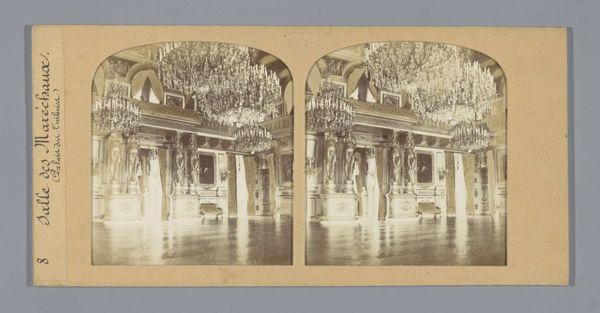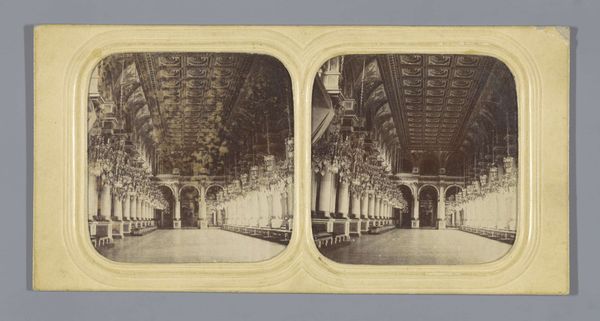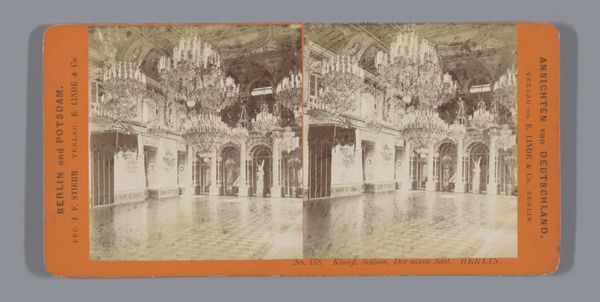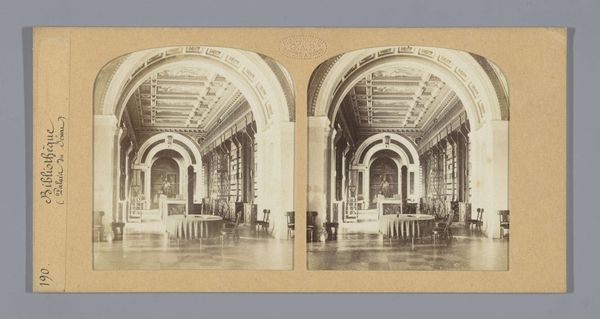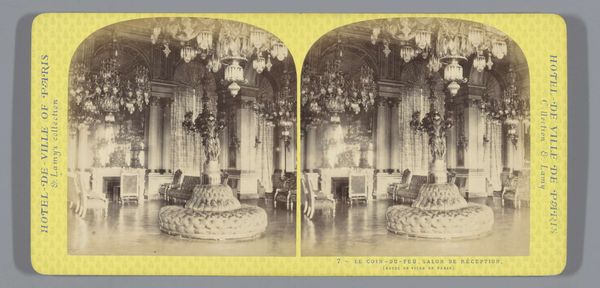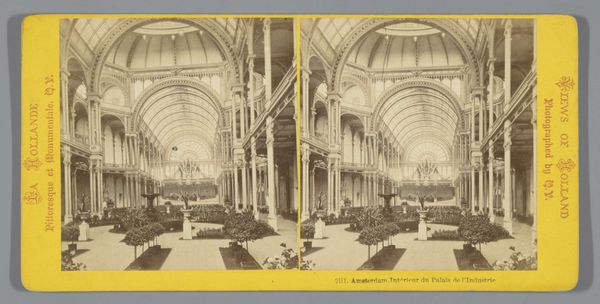
Interieur van de Salon de la Paix in het Palais des Tuileries te Parijs before 1871
0:00
0:00
print, photography
# print
#
photography
#
cityscape
#
history-painting
#
realism
Dimensions: height 85 mm, width 170 mm
Copyright: Rijks Museum: Open Domain
Editor: Here we have "Interieur van de Salon de la Paix in het Palais des Tuileries te Parijs," captured before 1871 by Ernest Eléonor Pierre Lamy, presented in a photographic print. It's… well, it’s overwhelmingly opulent, a vast room punctuated by enormous chandeliers. What strikes you about this image? Curator: This photograph is fascinating as a record of production, Editor. Think about the labor involved in creating a space like the Salon de la Paix, and then further think about the effort in producing this image as documentation. From mining the materials for those chandeliers to the artisanal craft shaping them, consider how many hands contributed, and what were their social statuses? Editor: That’s a very different way to look at it! I was mostly focused on the aesthetics. The chandeliers seemed like… a statement. Curator: Indeed. The statement hinges on consumption and display. These weren’t simply light sources, they were potent symbols of power, materialized through vast resource extraction and labour exploitation. Who benefits from this kind of production and who bears the burden? The photograph flattens these complexities, yet hints at the realities of class structures present during the Second Empire. Think about who owned and operated the camera. Editor: So you’re saying the photograph itself isn’t just a neutral image but a document embedded in that same system of production and consumption. It perpetuates it. Curator: Precisely. Photography, still relatively new, became another tool for documenting and glorifying wealth. But what happens when that wealth is redistributed? This image takes on another meaning entirely after the burning of the Tuileries Palace. Editor: I see. It’s about tracing the material footprint of power, from extraction to image-making, and beyond. It reframes how I initially understood it as an art object. Curator: And challenges traditional notions of artistic value. Material conditions dictate production of objects. This image presents evidence for considering these elements of an artistic product, as much as considering aesthetics.
Comments
No comments
Be the first to comment and join the conversation on the ultimate creative platform.
